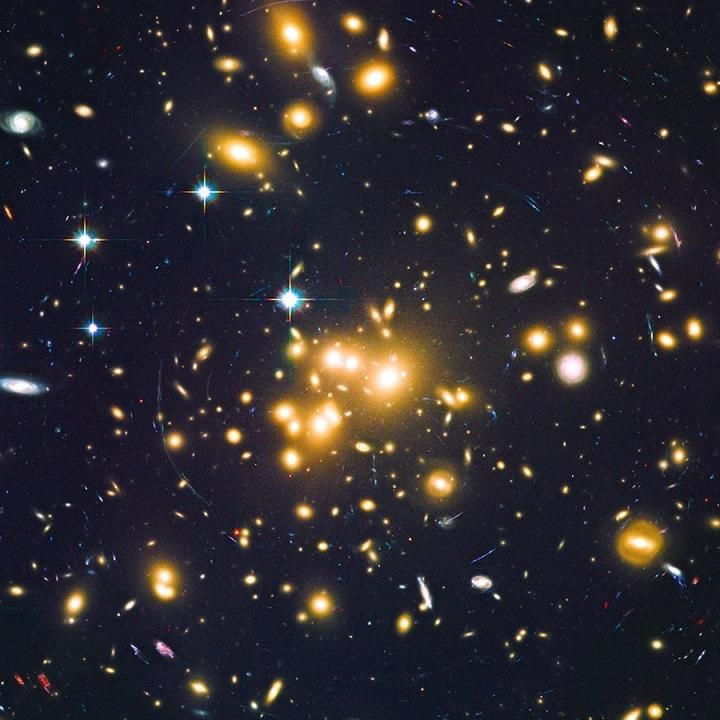Hubble Captures Swarm Of Ancient Dwarf Galaxies Using A Gravitational Lens

A team of researchers have, using the Hubble Space Telescope, captured a large population of ancient dwarf galaxies. Astronomers believe studying these structures, formed when the universe was between two and six billion years old, could provide vital clues to the birth and evolution of stars.
“Despite their importance, distant dwarf galaxies remain elusive, because they are extremely faint and beyond the reach of even the best telescopes. This means that the current picture of the early universe is not complete,” the University of California, Riverside, whose researchers carried out the observations, said in a statement.
In order to get a clearer picture of these galaxies, the researchers made use of a phenomenon known as gravitational lensing.
Gravity, as Einstein’s theory of general relativity tells us, warps space-time. Occasionally, when the stars are aligned just right, this warping of the fabric of the universe results in a phenomenon known as gravitational lensing, wherein the strong gravitational field of a foreground object acts as a lens that “bends” light from an object in the background and allows scientists to catch a glimpse of what might otherwise have remained invisible.
In this particular case, a warp in space-time created by the Abell 1698 galaxy cluster — located roughly 2.2 billion light-years from Earth — was used as the gravitational lens.
“These dwarf galaxies are 10 to 100 times fainter than galaxies that have been previously observed during these periods of time. Though faint, these galaxies are far more numerous than their brighter counterparts,” the University of California said in the statement.
The abundance of dwarf galaxies in the early universe suggests these structures may have played a crucial role in reionization — a period in the early universe triggered by the formation of the first stars. This is further attested to by the massive quantities of ultraviolet radiation — produced by young, hot stars — emitted by these galaxies.
The researchers now hope to study these dwarf galaxies in further detail with the James Webb Space Telescope, scheduled for launch in 2018.
© Copyright IBTimes 2024. All rights reserved.






















